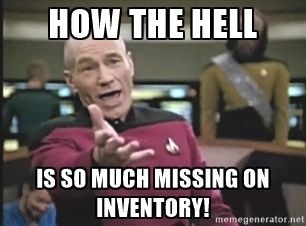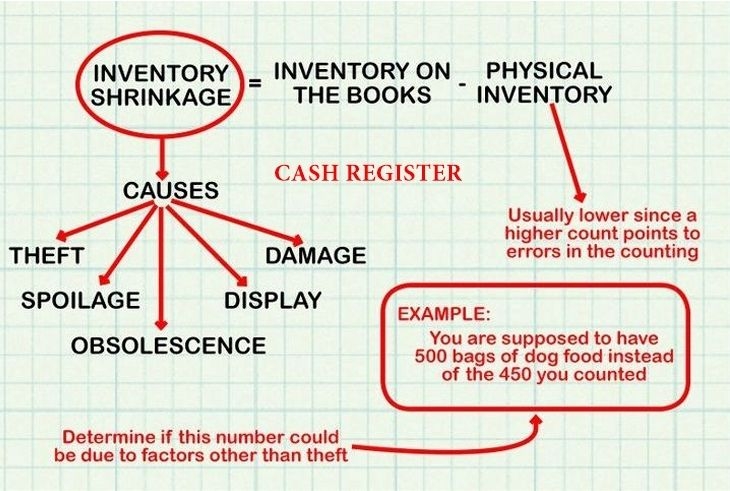Messy Inventory
Did you get everything you were looking for this Christmas? Online or at the old-fashioned store, did you find everything that you wanted?
I bet you didn’t. Many did not. In our family, we had to resort to the second or third choices, or we found something almost like it in another place. Speaking to friends and neighbors they had the same experience, items advertised or displayed online, but not available. Even on the Big River web site. I even got notices of backorder – where the merchant accepted the order, acknowledged the order, charged the credit card, and then a few days later sent a message listing items that would not ship before Christmas.
There is no doubt that there are some unhappy consumers.
Stop and think about this for a moment. Retailers invest huge to buy the inventory management and supply chain software. They spend large to project, forecast, procure, process, ship, warehouse and then ship again product to consumers. And yet, they still miss the mark in making sure they can fulfill demand.
Why?
Yes, they could underestimate the demand for the products. We see that with fashion garments a lot. Forecasting is one of the black arts that buyers and supply chain managers get wrong. However, with the analytics available today, and what is in the future, forecasting is not a likely suspect.
Yet, suppliers can fall down in their process of making the goods. Natural events happen that can stop the flow of critical materials if there is just one source. However, in the supply chain world of today, there are usually multiple sources for a product, some costing more than others, but they exist.
Yes, carriers and warehouses can fail to provide the staffing, or the weather can interfere to delay the speedy and timely delivery of goods. But we had fair weather this Christmas. The warehouses and carriers, stinging from the memories of service failures of Christmas past, all invested in additional capacity, in machines and personnel, to assure the flow of packages from shelf to the customer.
Yet, low on-shelf stock, and no on-shelf stock, troubled a fair amount of consumers this year.
Why? Could it be Phantom Inventory?
Phantom inventory is the stuff that the inventory management system says is in stock, but can’t be found on the shelf. The inventory is still around, it is in the warehouse or the stock room, but the staff in the warehouse or the store can’t find it.
Phantom inventory is the stock sitting up high in the pallet racks, the replenishment that happened in the WMS but not in the real world. Phantom inventory is the stock stuffed into the back corner of the shelf behind other stuff in the stock room because the employee did not know where to put it. Phantom inventory is hundreds, thousands, tens of thousands of dollars of working capital that the company could put to use to create more business, if they only knew that it was there.
Phantom inventory is what clips between 2% and 5% of net profit off the bottom line every year. It isn’t called phantom inventory on the income statement. Heck, it may not even show up on the income statement, except as an adjustment to gross margin. That is because inventory adjustments appear on the balance sheet. Other costs, like lost sales, or the lost labor used to locate the missing products get hidden as adjustments in other line items on the income statement.
The costs are real. They are the result of sloppy execution.
Phantom Inventory ripples across a supply chain like the ripples from a rock thrown into a pond. Inventory hidden in the back room is inventory not on the floor, it is inventory that the customer can’t find and buy, and inventory that store managers adjust out of stock when they see the shelf is empty. That adjustment creates a false demand signal that ripples back up the chain, into the fast calculations of the inventory manager systems, triggering larger orders for products.
Poor scanning practices at the cash register are another suspect. Last week I bought 15 paintbrushes of different sizes, three ½” brushes, three ¾”, three 1”, three 1-1/2” and three 2” brushes. When I got back to the shop and looked at the receipt, I discovered the cashier scanned only one of the 1” brushes and entered the quantity of 14. She did not scan each brush. I got a free brush! The larger brushes cost more than the 1”, so I got an even better deal. Because the cashier thought she was saving time, the store lost money. Moreover, the inventory got out of whack. I bet that she was trained to do that.
The same day in another store, I purchased a sheet of MDF board for a machine build. The manufacturer staples a barcode on the edge of the product for the retail cashier to scan at the register. This retailer also uses color stripes to identify the sheet products, using a combination of colors and stripe count to make the process easy to the cashier. Sure enough, when I got back to my shop I look at the receipt and see that the cashier rang the product as ½” sanded plywood, not as the ¾” MDF. Using the stripe system the cashier erased $12 of value off my purchase, and the store system sold one sheet of BC plywood and the system now has an extra sheet of MDF board.
In both cases, the cashiers are following their training. In both cases, they made mistakes. In both cases, the customer gained and the store lost.
Could this be happening in your store?


